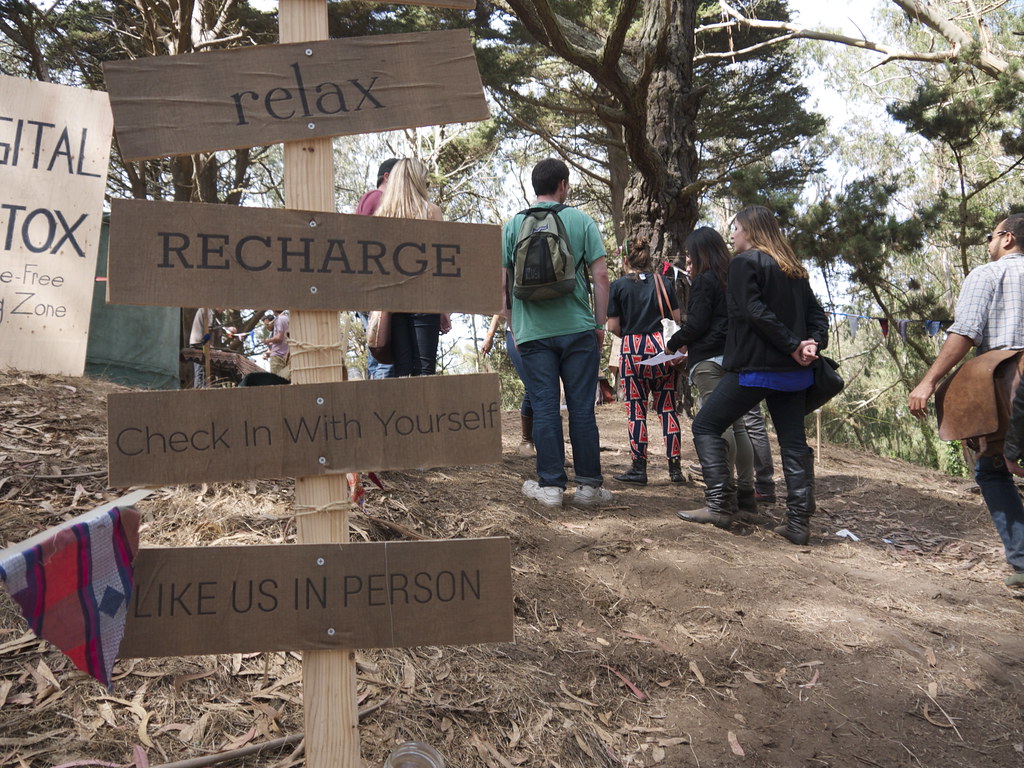This post originally appeared in Ragan’s PR Daily.
One of the world’s most connected men, Baratunde Thurston, recently took a month-long digital detox, chronicled in the July/August issue of Fast Company.
Thurston had grown increasingly exhausted with trying to keep up with all the Tweets, photos, status updates, check-ins, chats, and texts. He realized his always-connected lifestyle just wasn’t sustainable. Technology allowed him to create thousands of virtual relationships and conversations, but instead of adding value, they were actually stressing him out. He was spread a mile wide and an inch deep, connecting with everyone yet not really connecting with anyone.
Chances are, you’ve felt the same way. What once began as an easy way to connect with friends and family, meet new people, and share interesting stories and links has become an overwhelming source of stress. We struggle to keep up with the constant notifications and alerts. We have an irrational fear of missing out (or “FOMO”) on that party, that funny video, that witty comment. We want to be everywhere, but in doing so, we aren’t ever really anywhere.
The good news is the pendulum seems to be swinging the other way. People are now actively avoiding their digital lives in favor of reconnecting offline:
- 61 percent of Facebook users have taken a vacation from the site.
- There are apps that enable you to “brick” your phone for a specified amount of time, allowing you to completely disconnect.
- Vacation destinations like Camp Grounded or this Digital Detox package in St. Vincent and the Grenadines are capitalizing on this trend as well, catering to those individuals looking for “digital detox-acations.”
Paradoxically, as people are realizing this always-on, always-connected lifestyle isn’t sustainable, companies and brands seem to be going in the opposite direction. I remember when publishing one blog post a week was considered a best practice for brands. Now brands are expected to post 15 times or more every month, and be present and active on Instagram, Twitter, Facebook, Pinterest, Tumblr, Soundcloud and Vine. There are even tools that will automate the whole process for you, enabling brands to do away with all those pesky human tasks like researching, thinking and writing.
Content marketing is becoming a numbers game that most brands aren’t going to be able to compete in, much less win.
Rather than trying to keep up with the Joneses and be everywhere (while simultaneously not being anywhere), brands should consider going on a form of digital detox of their own. Quitting everything for a month isn’t really an option, but there are several lessons brands can learn from the trend to help simplify things:
- Stop micro-measuring. Instead of focusing on the ROI of every piece of content, spend some time doing things that don’t have an immediate ROI. Ask your customers questions because you’re generally interested in their feedback, not because it will increase your engagement figures. Share something interesting that another brand created. Write a blog post about an employee who did something interesting.
- Prune your presence. You probably can’t just up and leave Twitter, but will anyone notice if you shut down your Pinterest page? Close your Vine account? Stop the weekly meeting to discuss your Tumblr editorial calendar? Is every single one of your online properties helping you achieve your business goals? Or is it there because you heard it was the next big thing?
- Learn the value of silence. Just because a royal baby was born doesn’t mean you have to offer your congratulations. If there’s a terrible tragedy, don’t feel the need to offer your condolences. Believe it or not, most of your customers aren’t going to get into an uproar because you went a day without a post. If you’re not going to do anything tangible to help, show some respect and be quiet.
- Take it offline. Brands should realize their communities live offline as well. Take some of your social media budget and instead of applying it to more content generation, syndication, or promotion, consider sinking it into some good, old-fashioned offline activities. Go to a store and talk with people about your products or your commercials or your ads. Take some of the products you’ve reserved for influencer outreach and give them away to people in the community. Really effective social media goes beyond content and builds real relationships with real people.
Just as a person may have to unplug once in a while to build deeper, more meaningful connections, brands have an opportunity to start doing the same. You may just realize that those clicks, impressions, and likes you’ve spent so much time measuring are actual people who want to talk with you about your brand.


Leave a Reply
You must be logged in to post a comment.